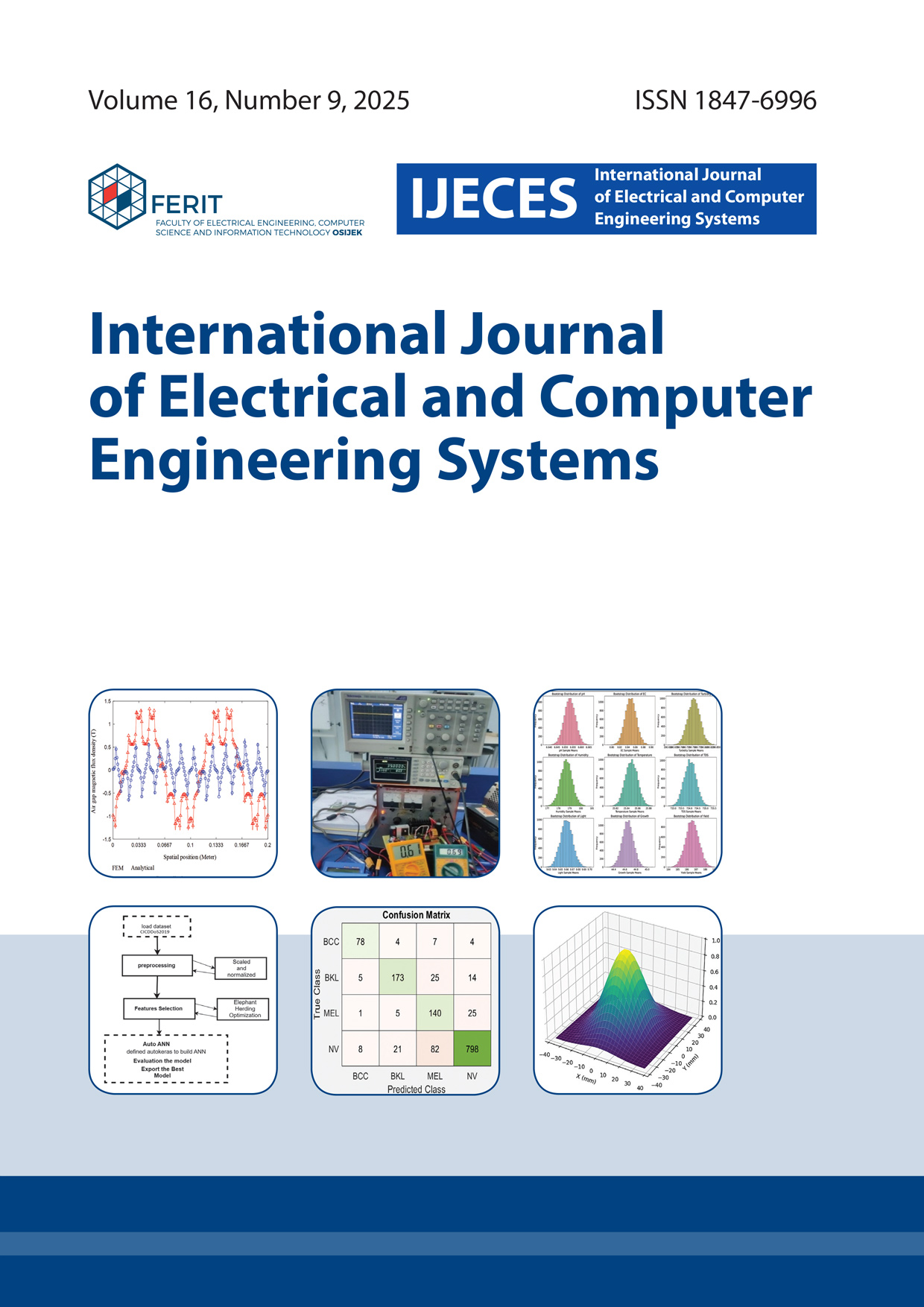Optimal Power Control Using Modified Perturb and Observe Algorithm for Photovoltaic System Under Partial Shading
DOI:
https://doi.org/10.32985/ijeces.16.9.3Keywords:
photovoltaic, optimal control, perturb and observe, partial shadingAbstract
Implementation of photovoltaic systems encounters problems, particularly concerning Partial Shading Conditions (PSC), solar irradiance, and temperature, which influence the generated output power. The PSC can diminish the power efficiency of the photovoltaic system. Consequently, a controller is required to optimize the photovoltaic system’s power output by considering the power supply characteristics. This paper discusses optimal power control in photovoltaic system under PSC. The proposed method employs a Modified Perturb and Observe (MP&O) algorithm based on the observation of current and voltage output from the photovoltaic system. The MP&O algorithm is integrated into a microcontroller and will provide PWM signals to operate the synchronous buck converter. Testing was performed under PSC. The experimental results indicated that the synchronous buck converter achieved a performance efficiency of 85%. The efficacy of the MP&O algorithm was evaluated without the MPPT method and conventional P&O algorithm. The MP&O algorithm outperformed compared to without MPPT method and conventional P&O algorithm. The MP&O algorithm yielded more consistent output power and necessitated a quicker tracking duration. The proposed method achieves an average output power efficiency of 84%; in contrast, without the MPPT method, it only reached 57%, and with the conventional P&O algorithm, it attains an efficiency of just 70%.
Downloads
Published
How to Cite
Issue
Section
License
Copyright (c) 2025 International Journal of Electrical and Computer Engineering Systems

This work is licensed under a Creative Commons Attribution-NonCommercial-NoDerivatives 4.0 International License.


